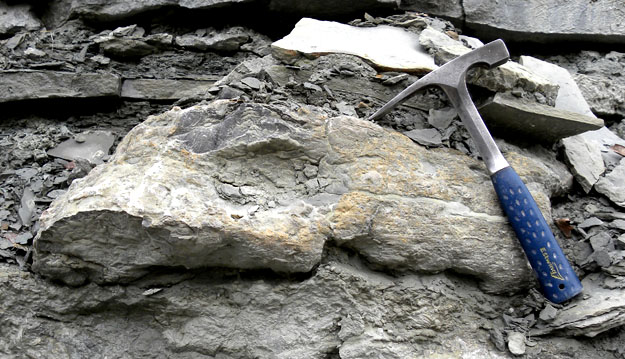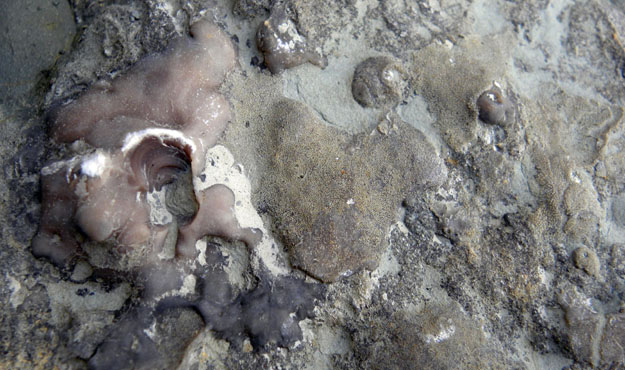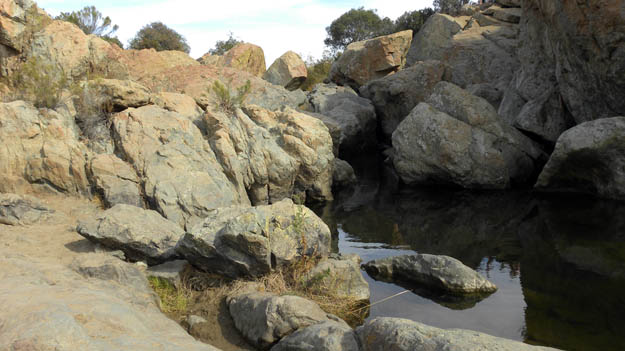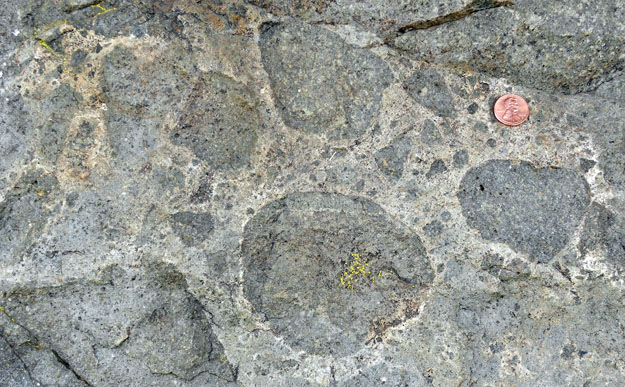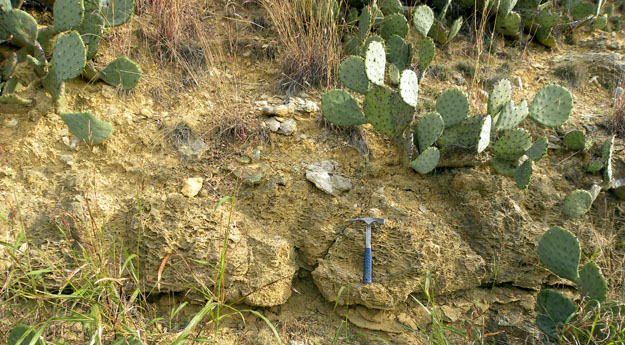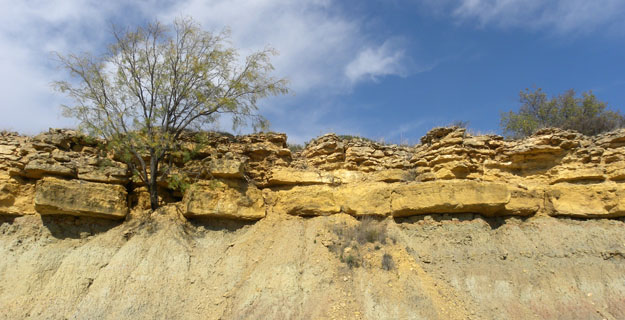MAYSVILLE, KENTUCKY–Strong earthquakes produce seismic waves which can do much damage on land, as we well know. They can also disturb unconsolidated sediments on shallow oceanic shelves and platforms, producing characteristically swirled structures called seismites. The Upper Ordovician outcrop we visited today has three horizons of well-preserved seismites associated with those strange blocks described previously.

The "ball-and-pillow" structures in this view of the Kentucky Route 11 outcrop of the Fairview Formation are seismites produced by Late Ordovician earthquakes. There are two seismite horizons visible here, each with a flattened top produced by later erosion and redistribution of the sediments by oceanic currents.
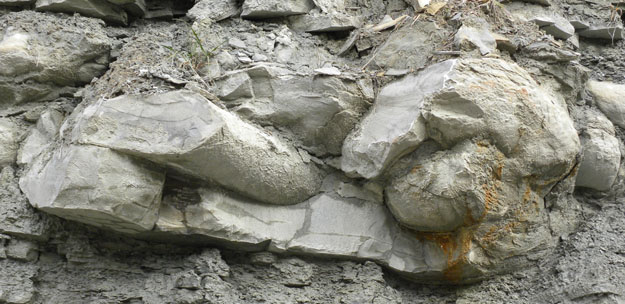
Closer view of a seismite in the Kentucky Route 11 outcrop. ( I couldn't reach this high to place my hammer for scale; the structure is about a meter thick.)
The earthquakes which caused these seismites were probably associated with orogenic (mountain-building) activity to the east where the present (and much later) Appalachian Mountains sit. Careful measurement and mapping of seismites can tell us much about the specific locations and magnitudes of these earthquakes, as well as the consistency of the sediments they disturbed long ago on those ancient seafloors.



